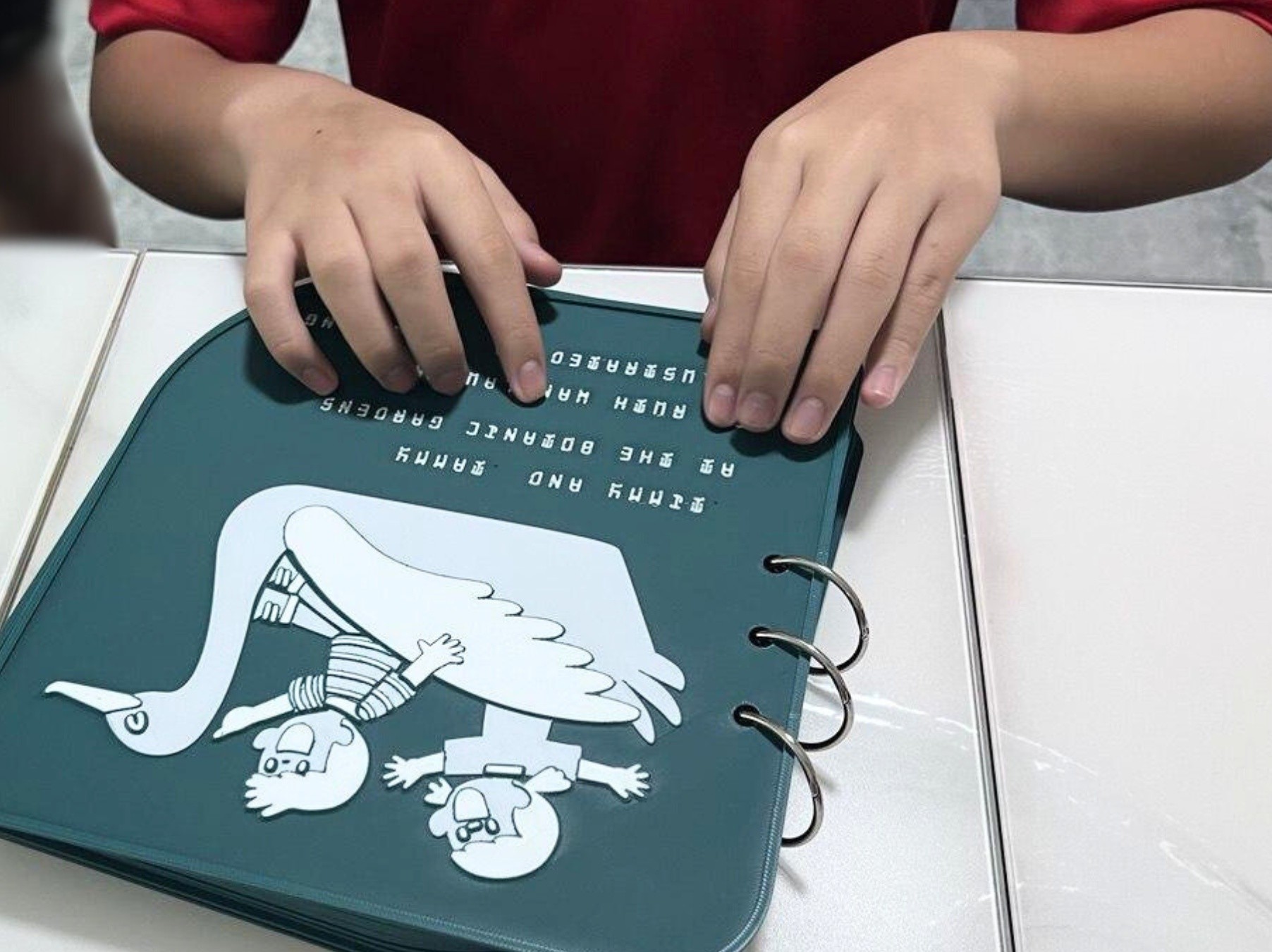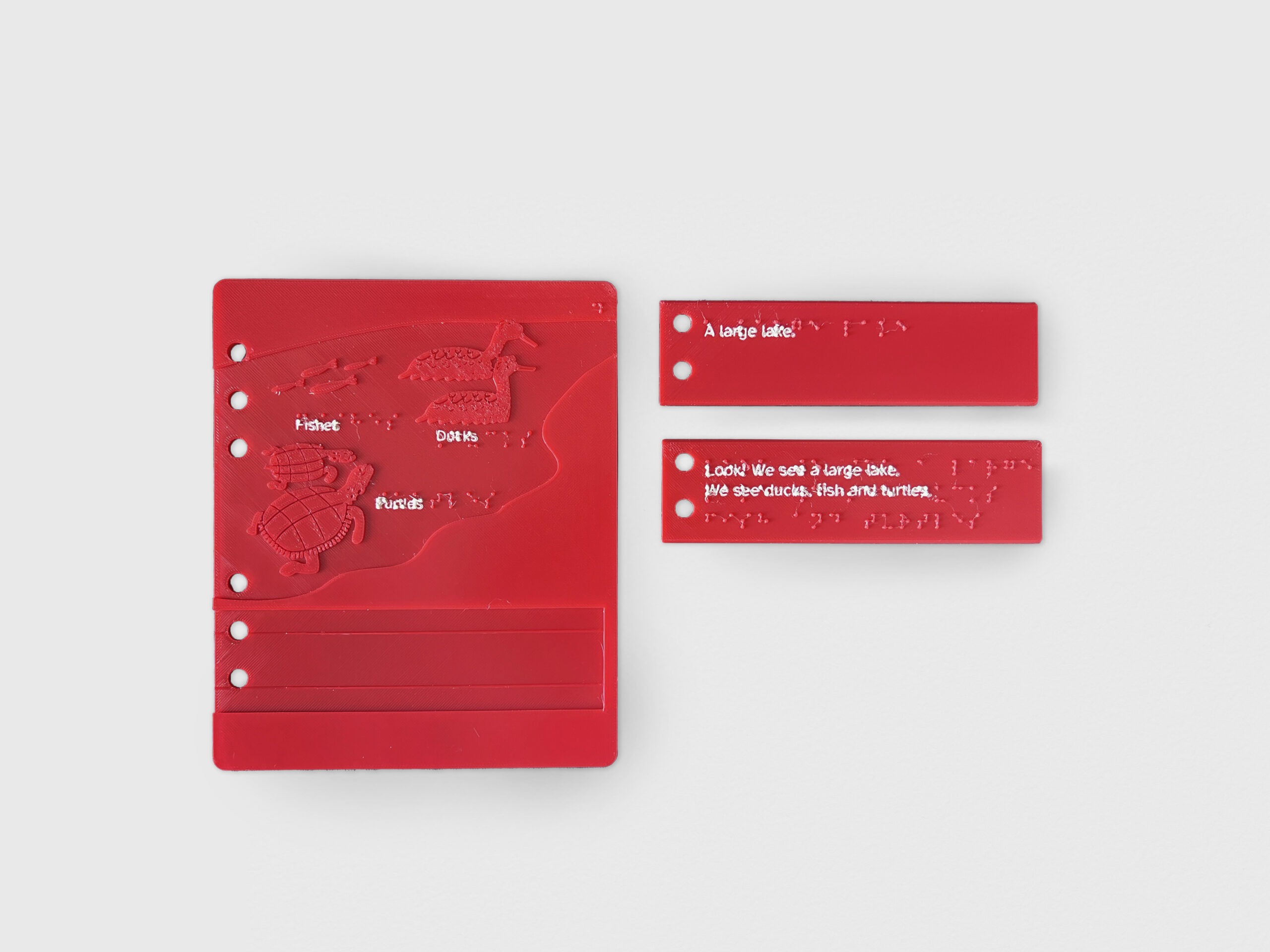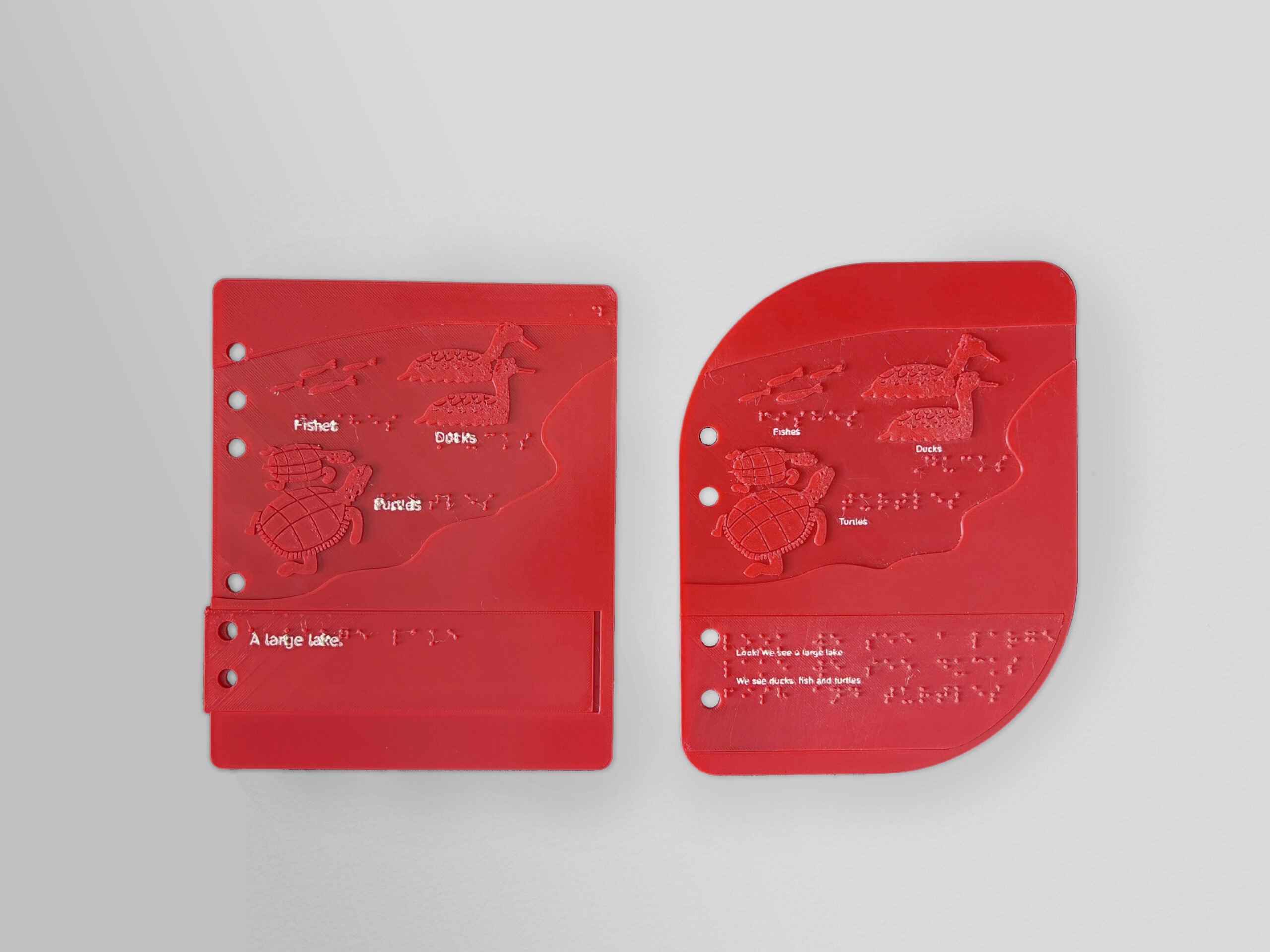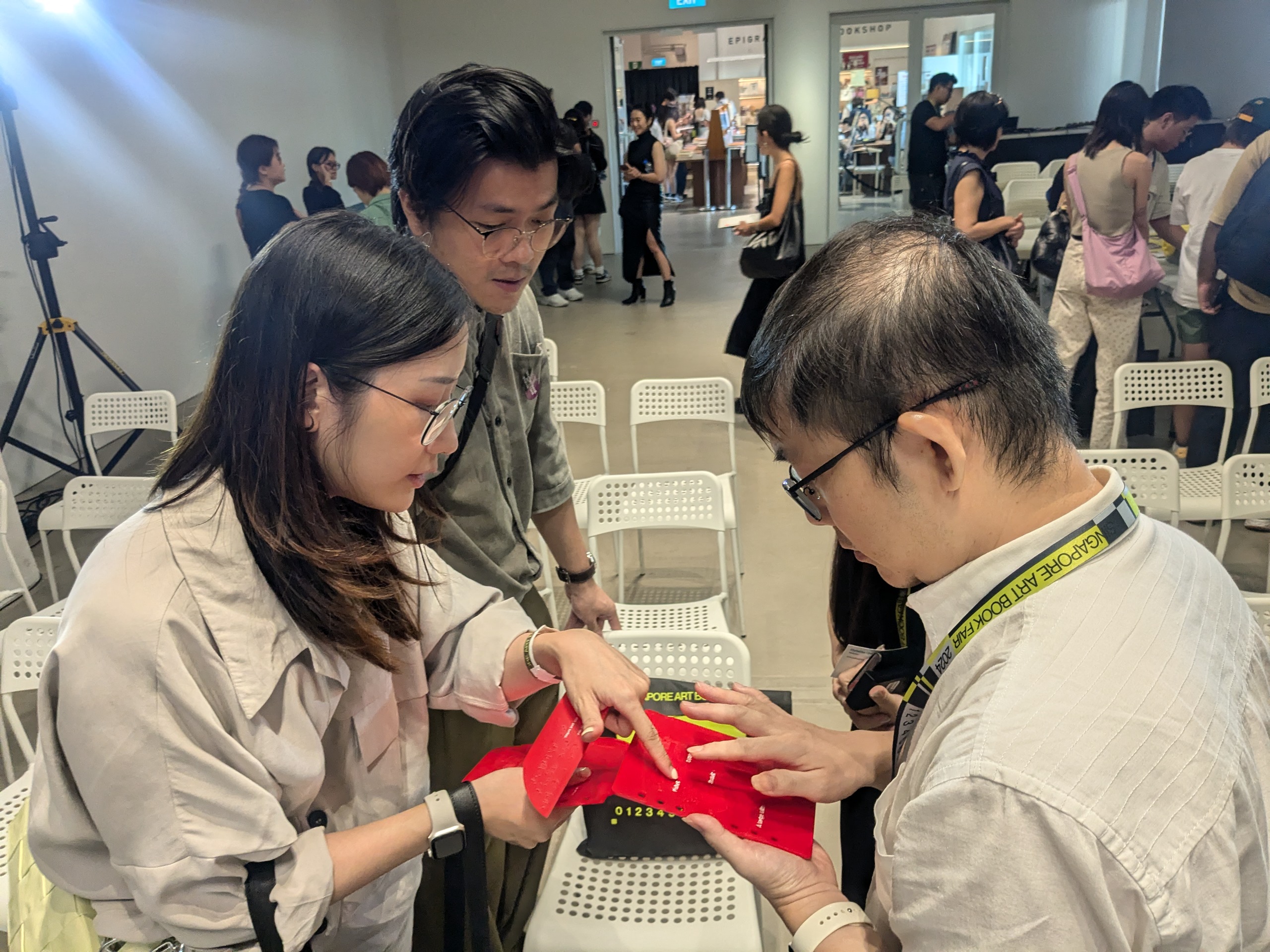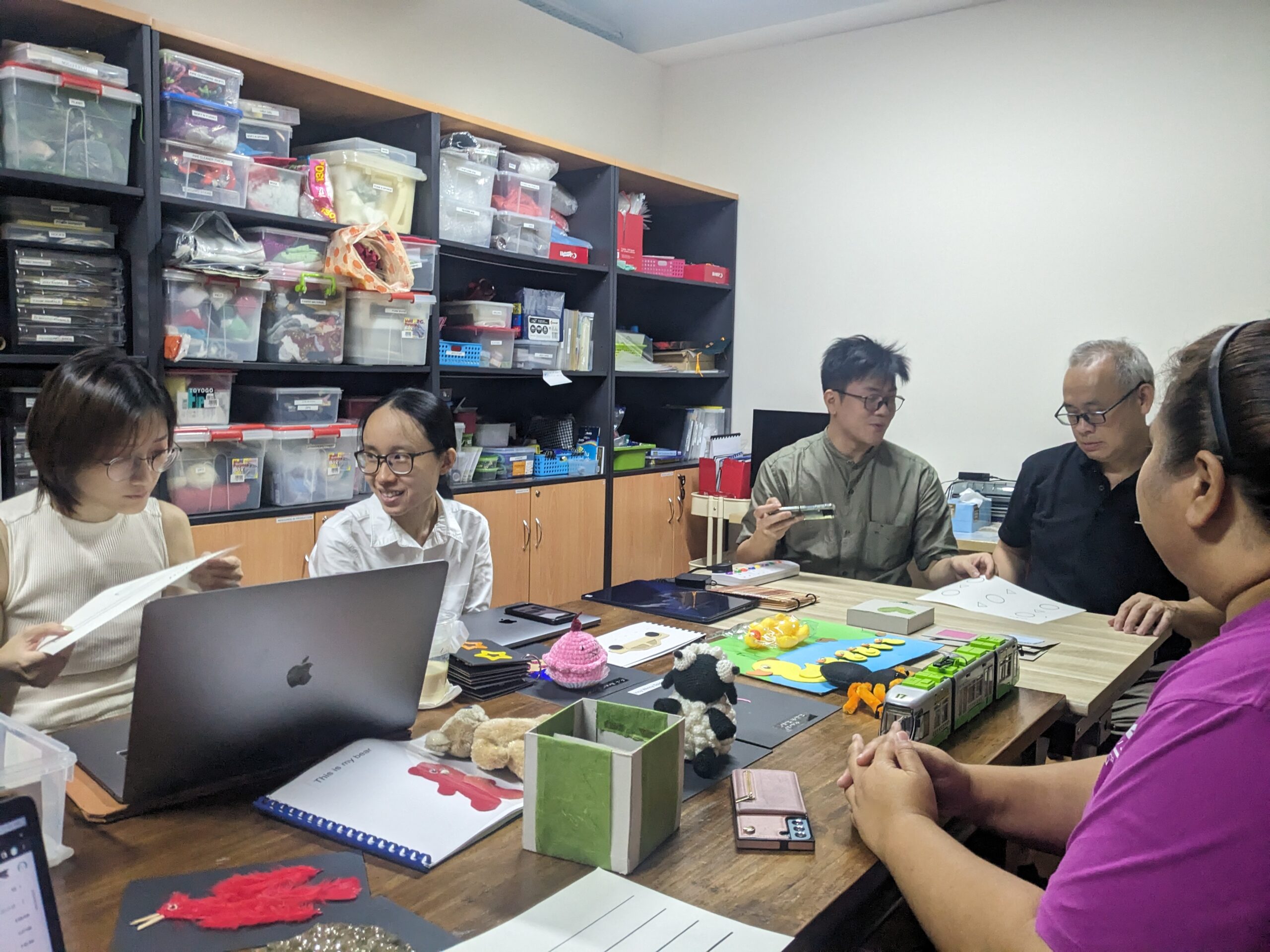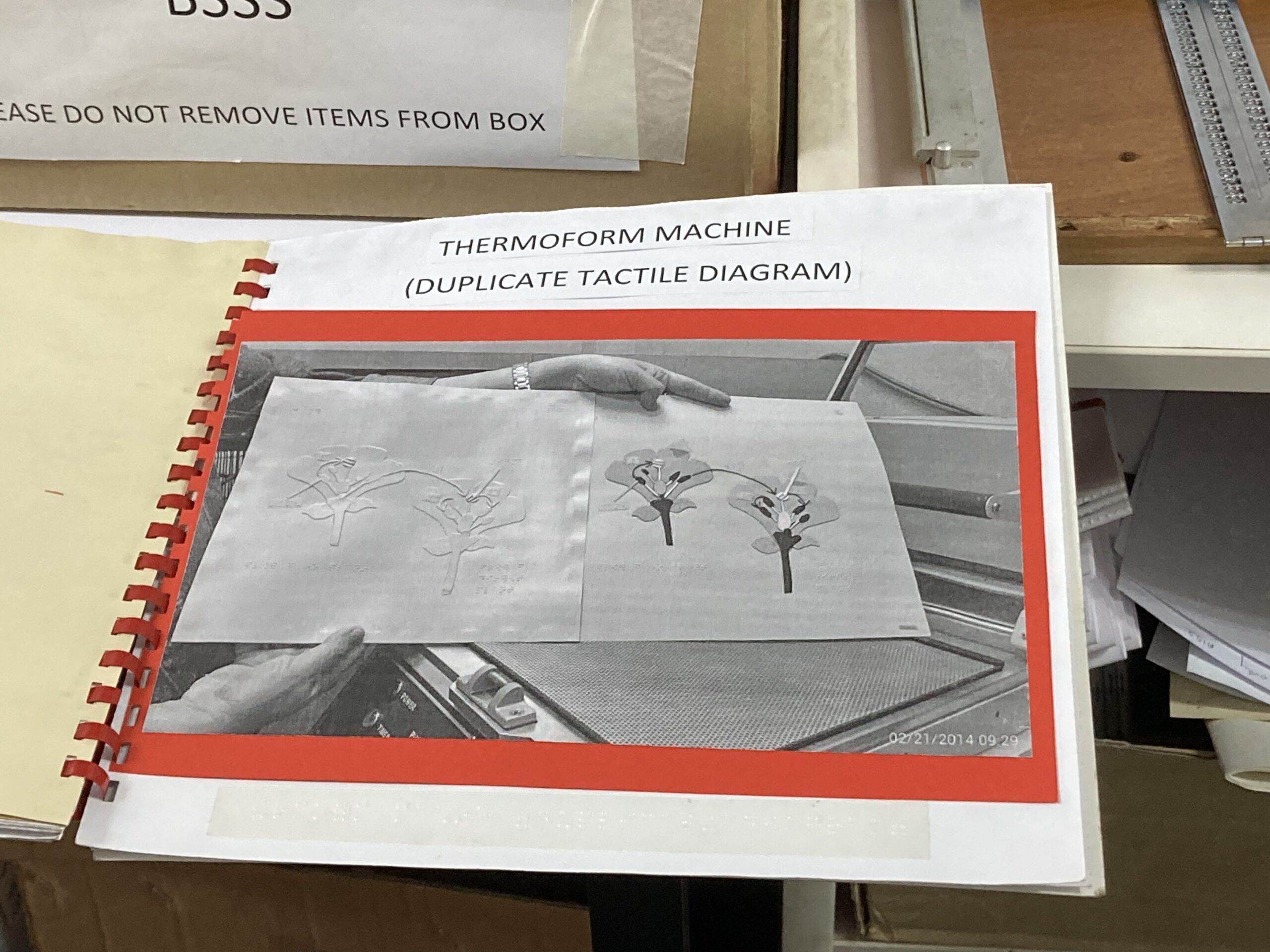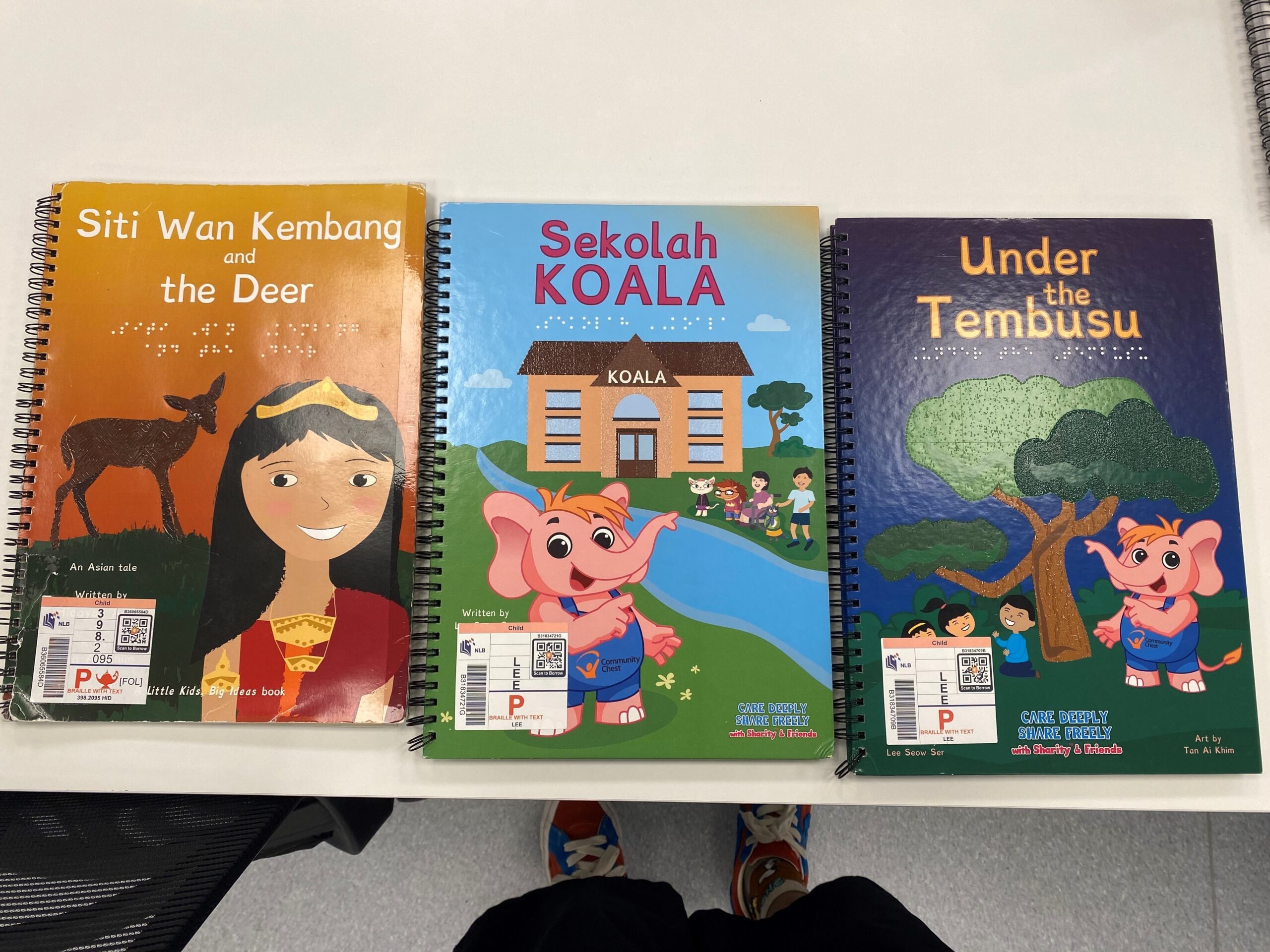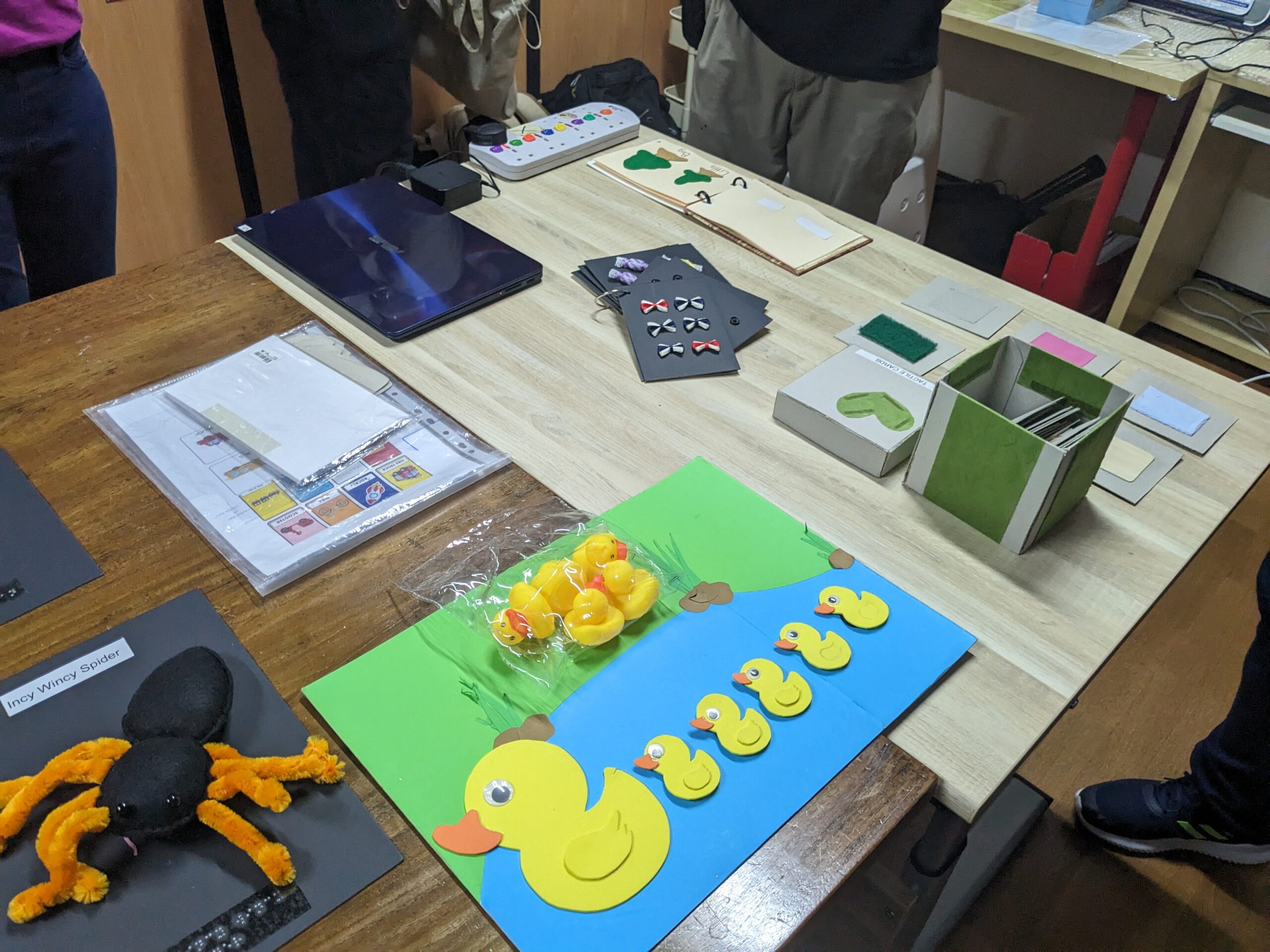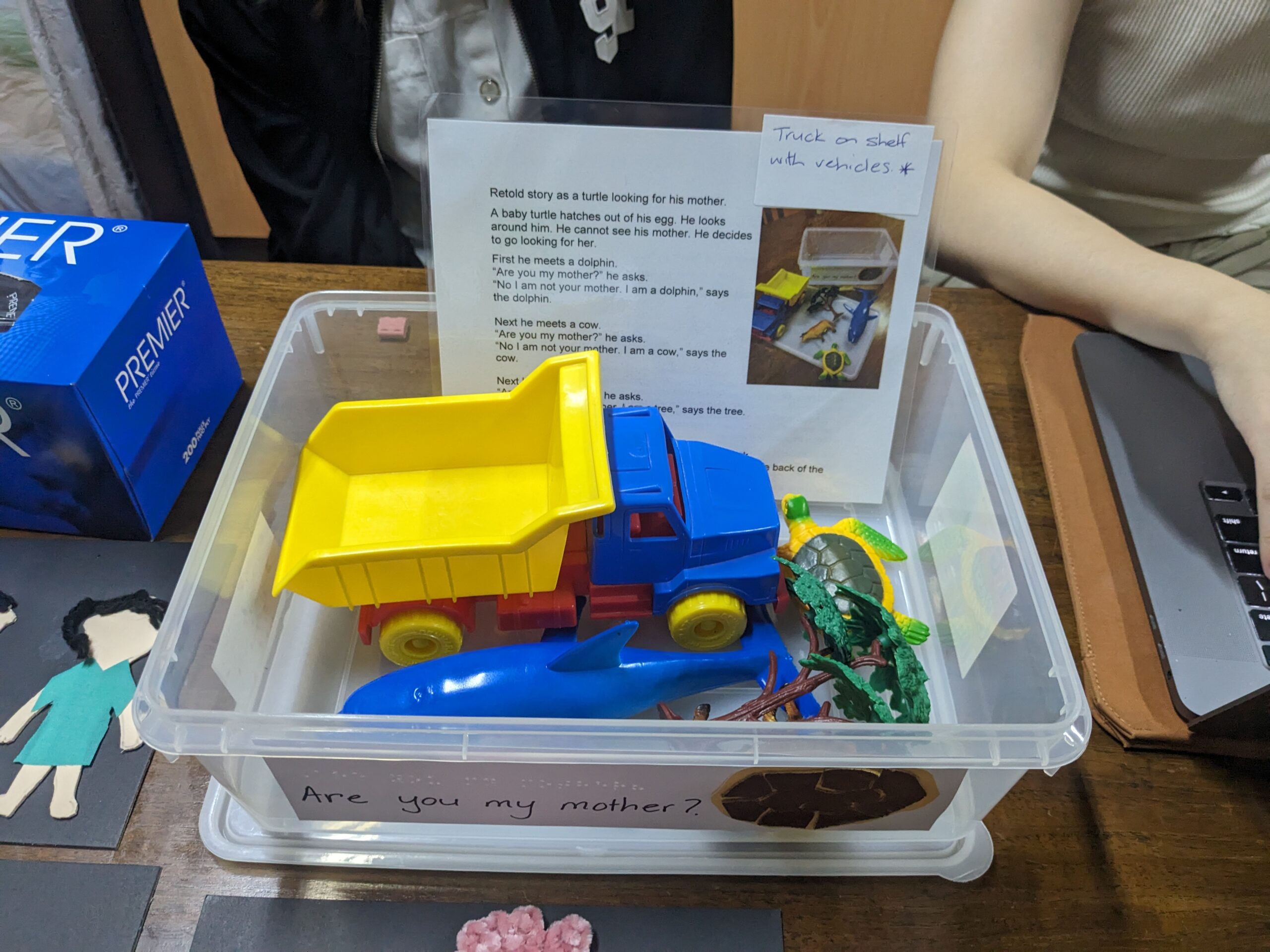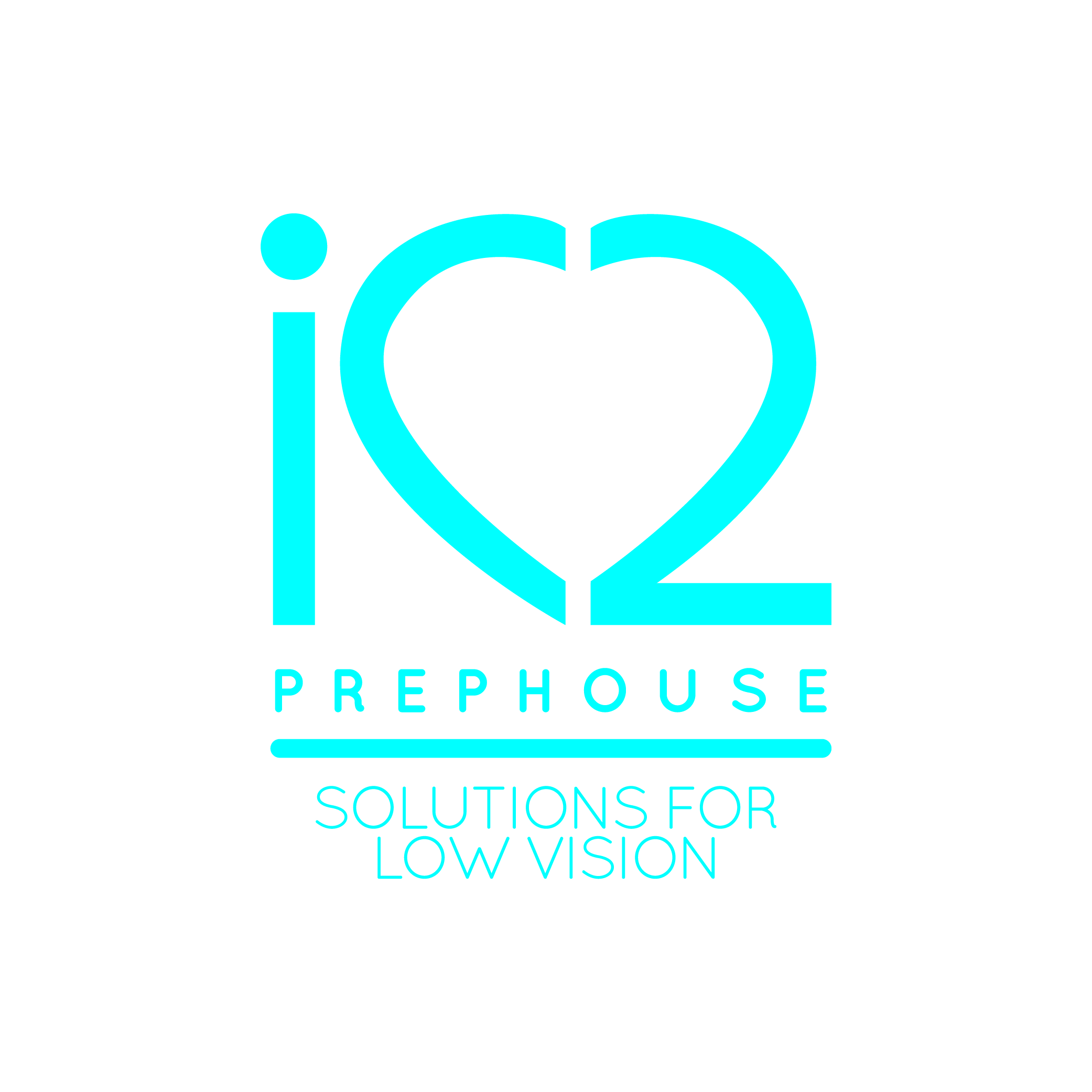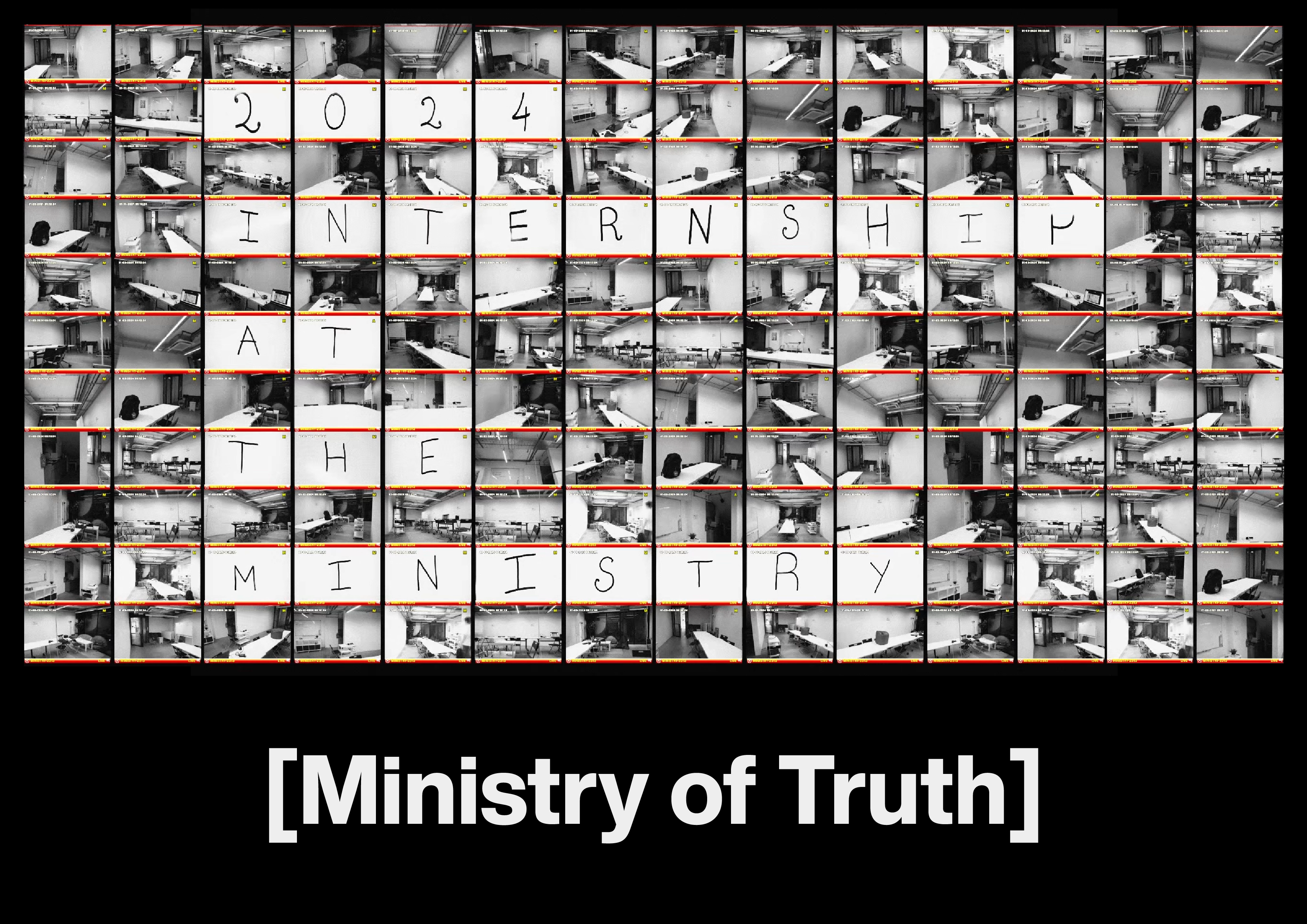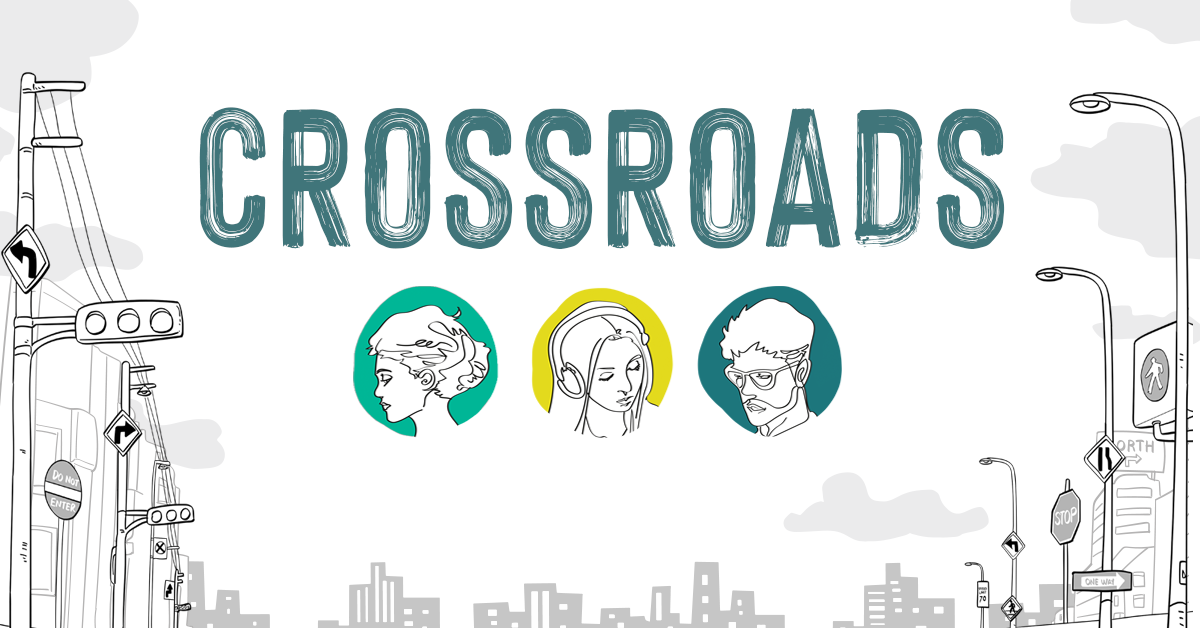This is a year-long research project to explore how we might use technology to make Singapore picture books accessible for visually impaired children. It is supported by DesignSingapore’s Good Design Research (GDR) grant and done in collaboration with NAMIC Hub@SIT and iC2 Prephouse.
Overview
The project responds to the lack of engaging, tactile picture books for children with visual disabilities, especially those featuring local content. Current books are handmade, fragile, and slow to produce.
By combining iC2’s expertise in visual impairment and NAMIC’s 3D printing capabilities, we explored how might we use technology to make reading resources accessible for visually impaired children. Our research aimed to
- Gain deeper insight into how children with visual impairments read, the types of books they use, teaching methods, and how they learn.
- Explore how braille books are designed and adapted, and to evaluate their inclusivity for individuals with visual impairments.
- Assess the availability of reading resources for visually impaired children aged 3 to 9, quantify accessible storybooks, and identify challenges faced by children and their caregivers in accessing and using these resources.
We then explored HMW use 3D printing to create scalable, enjoyable tactile picture books that support progressive learning and shared reading experiences.
Process
User interviews:
Over a five-month period, we visited the iC2 Prephouse where we conducted 10 user research interviews with students and caregivers. We also did field research by visiting the Singapore Association of the Visually Handicapped (SAVH), the Punggol Regional Library and Enabling Village.
Identify book for adaptation:
Out of 15 shortlisted titles, we chose Timmy and Tammy at the Botanic Gardens by Ruth Wan-Lau and Eliz Ong for its strong Singaporean content, clear structure, suitability for 3D-printed illustrations, and availability.
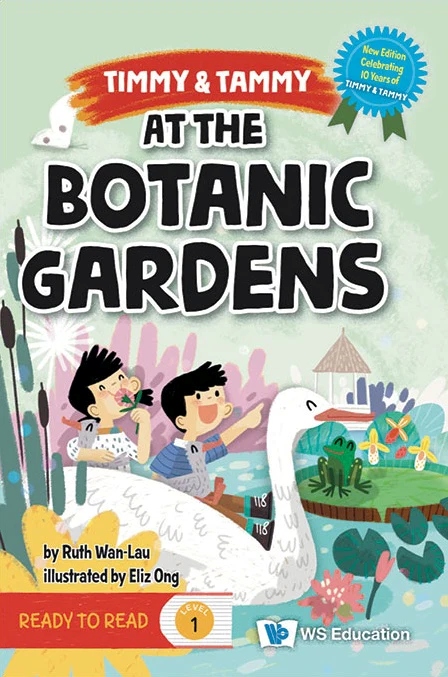
Design and prototyping:
During this stage, we adapted the print book into a simplified version, created 3D model designs, and produced a total of 5 prototypes. The prototypes were designed with three reading levels in mind, allowing children to grow with the book as their Braille skills develop.
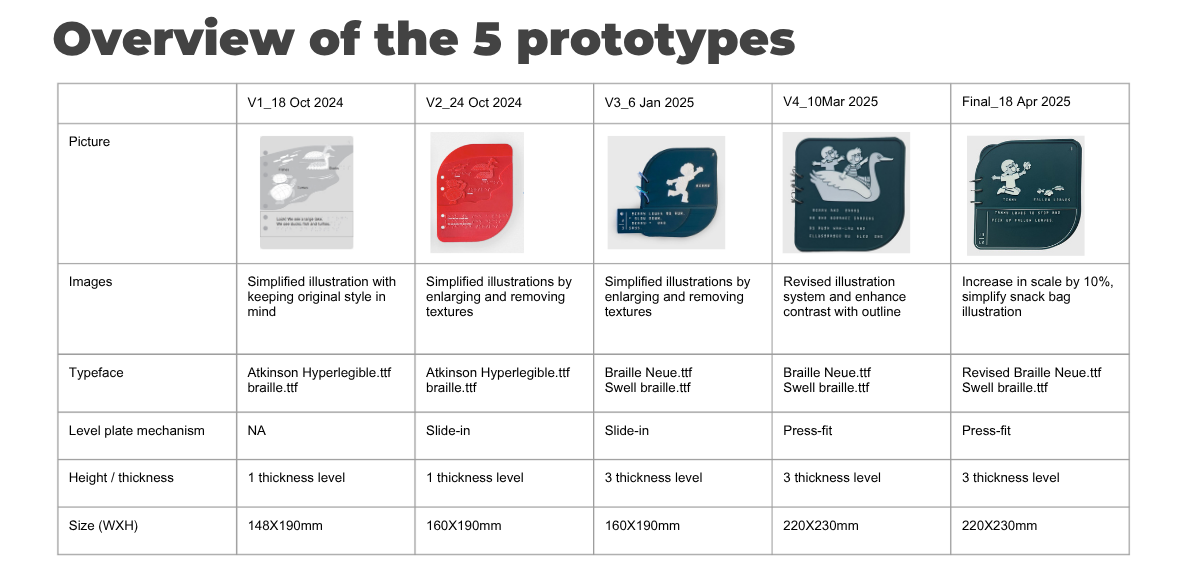
Usability testing:
Over the next five months (December to May 2025), our prototypes were tested in two phases with our target users, including educators, volunteers, and parents. The insights gained enabled us to simplify illustrations, select the appropriate font, and improve the tactility of the images and user experience.
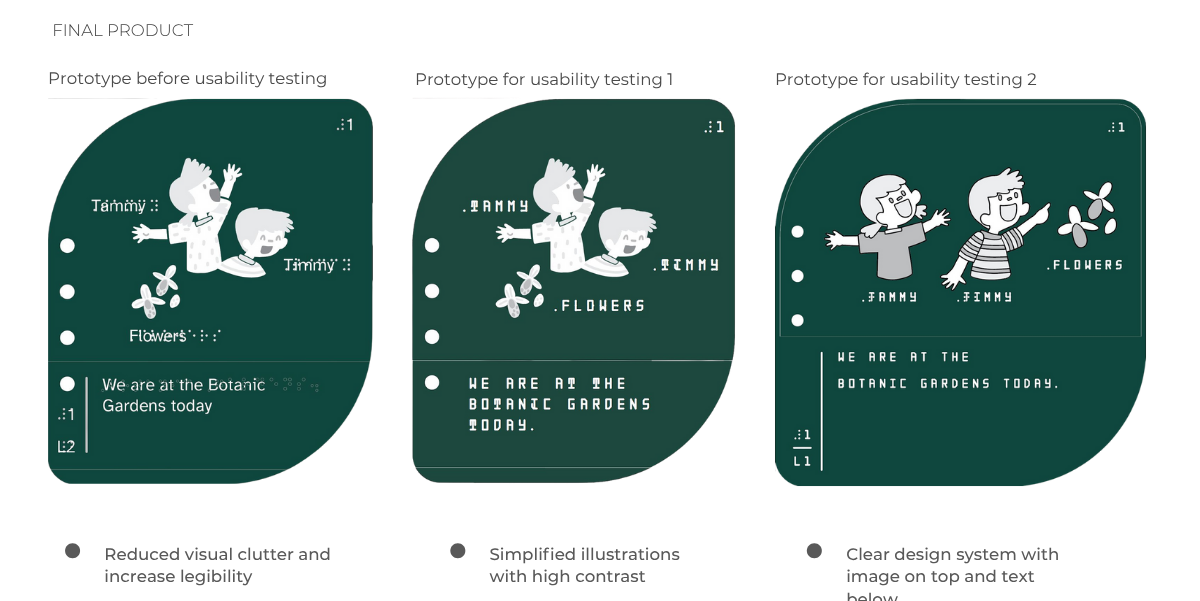
Refine the prototype:
By the end of April 2025, we produced our final prototype of the tactile book, with level-plate system, dual-text layout, and a puzzle mechanism Caregiver user guide.
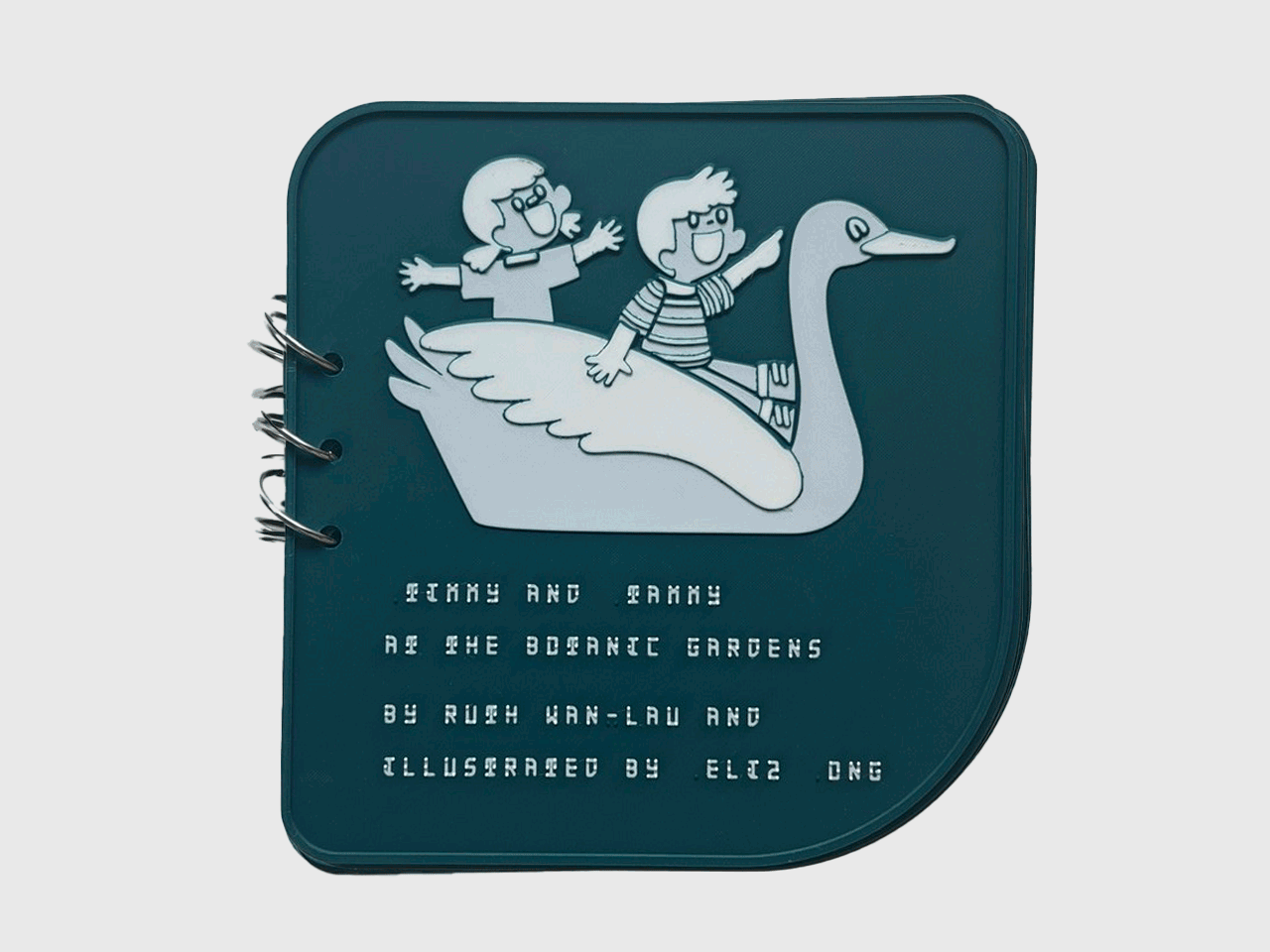
Next steps
Creating our first 3D tactile picture book prototype has sparked new ideas, such as the possibilities of multi-color 3D printing for low-vision users, and teaming up with new partners to create more tactile books.
Looking ahead, we’re exploring possibilities such as running 3D printing workshops for parents and teachers, developing an adaptation guide, and partnering with others to scale production and raise greater awareness around accessible reading.
Credits
BOOK
Title Timmy & Tammy: At the Botanic Gardens
Author Ruth Wan-Lau
Illustrator Eliz Ong
Publisher World Scientific Publishing
PROJECT
Concept and user research Tusitala
3D printing research and production NAMIC @ SIT
User testing and research support iC2 Prephouse
Braille Neue typeface Kosuke Takahashi
Recipient of the Good Design Research Grant
